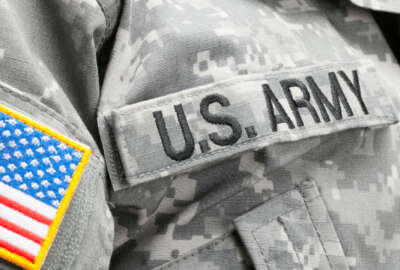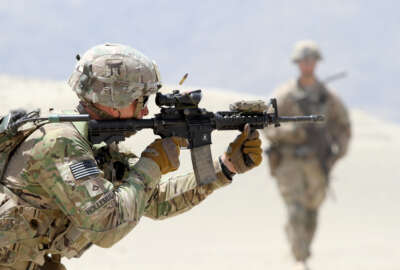
DoD takes Future Army Commission ideas to heart
The Defense Department concurred with all of the Future of the Army Commission's recommendations involving the Pentagon.
The Future of the Army Commission scored a perfect 100 with the Defense Department in the recommendations it gave the Pentagon, combatant commanders and Joint Staff in its 2016 report.
The commission gave DoD a series of fairly benign recommendations to go along with the other 52 that were directed purely at the Army.
The recommendations ranged from continuing to fund the Army’s growing personnel and pay system to solving issues with the ownership of Apache helicopters in the National Guard.
The Pentagon, according to a report to Congress, ate those recommendations up. It agreed with all 11 suggestions and marked a pathway forward for each one.
One of the only really controversial recommendations dealt with the ownership of Apache helicopters.
Congress tasked the commission with solving an issue regarding the allocation of Apache helicopters throughout the components.
When National Guard units in individual states began requesting Apache helicopters, it started debate on the roles of National Guard and regular Army aviation roles.
The commission looked at “what is the role of the Army National Guard in providing for external national defense and not just at the borders inside?” said Dakota Wood, a senior research fellow at the Heritage Foundation. “How does the Army Reserve play into this?”
The panel solved those questions by giving the regular Army 20 battalions of 24 manned Apache aircraft and the National Guard four battalions of 18 aircraft.
“The plan adds only two Black Hawk battalions to the Army National Guard. The Army should commit to using the four Army National Guard Apache battalions regularly,” the report states.
The report stated the solution gives wartime surge capacity by maintaining the four battalions in the National Guard.
DoD stated in its response that “periodic deployments of these formations will contribute to maintaining the operational experience of pilots and maintainers.”
Outside of the helicopter issue, DoD is already taking steps to implement some of the commission’s recommendations.
One recommendation to DoD stated the Army should budget for 3,000 reservists a year to be called up involuntarily from active duty to serve yearlong deployments.
DoD supported the measure and the Army is already budgeting for 2,000 reservists in 2018. The Pentagon estimated the cost of 3,000 reservists is about $290 million to $360 million not including operational, training and sustainment costs.
The department stated it would try to accommodate 3,000 reservists through a combination of emergency war spending and base budget funding.
DoD also agreed to keep funding the Army’s Integrated Personnel and Pay System. The program creates a comprehensive personnel and pay record for each soldier that can be accessed at any time.
“The Army’s components operate separate personnel and pay systems, creating barriers to personnel readiness and a career or service that allows for an easy transition between components. A singular personnel management and pay system for the entire Army would integrate the total force administratively,” DoD stated. The personnel and pay system “is a critical enabler for the Army” and “will provide complete visibility of the total force in one human resources system, while simultaneously enabling the army to manage the talents of the total force.”
The commission asks DoD to do some analysis and assessment in its recommendations as well.
The commission wants DoD to incorporate in its planning and guidance an analysis of Army expansion requirements in order to balance capability and capacity. It specifically wants DoD to look at retaining leaders that are required to expand the Army in size, infrastructure and material.
Retention has become a bigger and bigger issue for all of the military services as they continue to compete with the private sector for top talent.
DoD stated “retention of experienced leaders, combined with adequate structural capacity are both vital to balancing the current and emerging demands while concurrently building readiness for warfighter requirements.”
The report stated DoD will conduct the analysis.
DoD will also conduct an assessment of combatant command needs so the Army can work more closely with the commands to assess the risks in missions and build on needed materials and needs of warfighters in the geographic and functional areas.
The Pentagon stated it will assess the command requirements and look at manpower and fiscal costs associated with them.
Copyright © 2024 Federal News Network. All rights reserved. This website is not intended for users located within the European Economic Area.
Scott Maucione is a defense reporter for Federal News Network and reports on human capital, workforce and the Defense Department at-large.
Follow @smaucioneWFED





